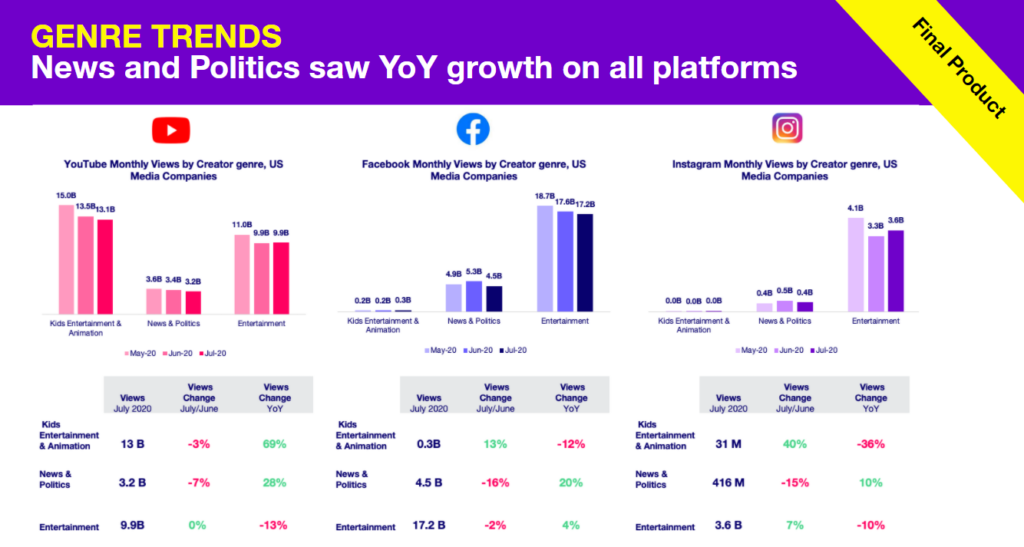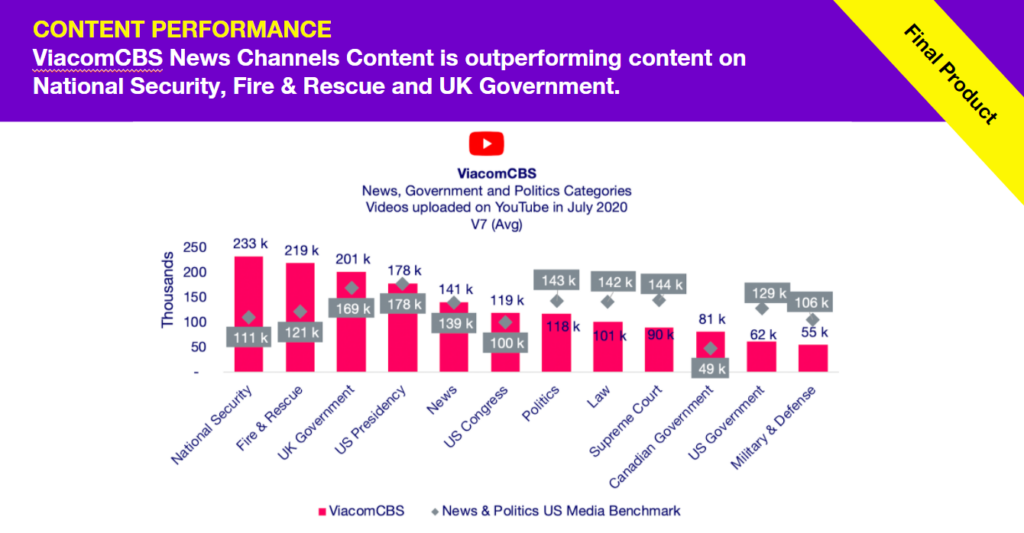As a data/insights analyst, staying on top of changes across social video content is nothing short of challenging.
How can you provide fast, reliable, and data-driven answers to internal stakeholders when they have questions about your company’s video performance?
This is where solid reporting comes in. Being able to quickly and easily report on the performance and direction of video content is vital to your company’s operations and success.
Below, we’ve outlined how analysts can create these types of quick, impactful reports that inform content strategy and provide a leg up on the competition.
Here’s how to get started:
Report on the Macro Environment
Start each report by looking at the competitive landscape as a whole. Which creators/channels in your industry are seeing growth (yours and/or competitors’)? What genres are growing and across which platforms?
Answering these questions first helps you understand the wider landscape and benchmark yourself against it. This data will also help determine not only which trends are on the rise, but also if your company is outpacing these and staying ahead of the game with your video content.
Example: Let’s say you’re a media company choosing to report on the latest trends in entertainment, news & politics, and kids’ content on YouTube and Facebook with a focus on the performance of media companies, influencers, and brands.
Look at the monthly and yearly growth across these genres, platforms, and creator types to determine short and long-term trends and where you land within them.

Analyze Your Own Video Content Performance
Next, look to how your overall properties or channels are stacking up against those of your competition (start with maybe 5-10 main competitors). Where do you stand in the market and what’s changed?
Also report on your channels’ content performance across platforms in your favored genres that you benchmark via competitors’ overall rankings. Additionally, include your video performance across categories by comparing one property/channel to the average category performance.
Example: If you were ViacomCBS wanting to analyze July’s performance of the News & Politics genre YouTube, look to your videos’ with high average 7-day views (V7) to determine which top categories drove views and engagement in July.
You would then look at competitors’ video content in these categories, as well, so you can get your industry benchmark for that month (maybe you had high performance in “National Security” or “US Presidency,” for example, but lower-than-benchmark performance in “Law” and “US Government”).

Bring It to Life and Iterate
Finally, repeat this process frequently and make improvements as often as necessary. It’s best to set up your reports and update monthly so you know your latest performance and impact.
You can also make sure to ask stakeholders what other information they need in future reports, and give others in your organization the ability to self-serve and answer internal questions more quickly and accurately to speed up the reporting process.
Overall, these steps will help you improve your company’s video content performance, content strategy, and budgeting and investment decisions.
Example: Include and always update macro and genre trends; competitive performance by property, genre, platform, and channels; and content performance within video categories.
Ready to make your own reporting more quick and painless?